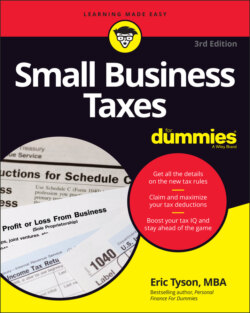Читать книгу Small Business Taxes For Dummies - Eric Tyson - Страница 59
S corporation tax specifics
ОглавлениеAn S corporation is known as a pass-through entity for tax purposes. This simply means that the income that the company earns passes through to the company’s owner/shareholders and is taxed at each person’s individual level.
So if the business shows a loss in some years, the owners/shareholders may claim those losses in the current year of the loss on their tax returns against other income earned. This is potentially useful in the early years of a new business, a time when most companies lose money. To be able to claim losses, you must “materially participate” in the business, which generally means that you actively work in the company at least 500 hours per year, although 100 hours will suffice if that’s the most among all other shareholders.
If, like most businesses, the company becomes profitable, it may actually make sense then to convert back to a regular C corporation to partake of the potential advantages of that status. That includes being able to retain earnings in the company, which you can’t do with an S corporation, and being able to use tax-advantaged fringe benefits. (If you plan to take all the profits out of the company, an S corporation may make sense for you.)
Even though the corporation doesn’t pay federal income tax, the company must annually complete and file IRS Form 1120S — “U.S. Income Tax Return for an S Corporation” (see the first page of the form in Figure 2-2; the complete form is located at www.irs.gov/pub/irs-pdf/f1120s.pdf). Also, some states levy a state income tax on S corporations, and many states require paying an annual fee.
One way an S corporation can save its owner/shareholders tax money is by paying them some of their compensation in the form of dividends. The reason this saves tax money is because dividends aren’t subject to payroll or employment taxes. You must be careful, though, to ensure employee salaries are reasonable and not set artificially low and made up for by high dividend payments. Speak with a tax advisor who has experience advising other small business owners in situations similar to yours.
Courtesy of the Internal Revenue Service
FIGURE 2-2: Page one of IRS Form 1120S, “U.S. Income Tax Return for an S Corporation.”
